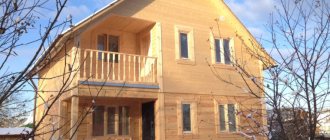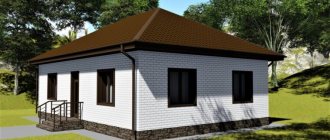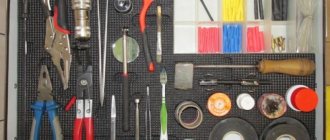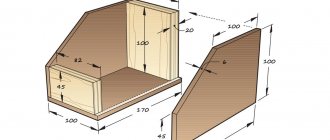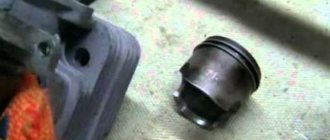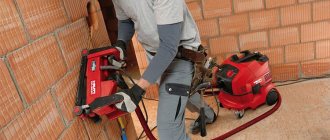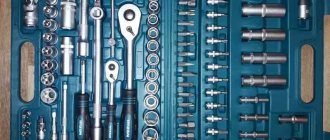Updated: 04/23/2021 12:51:21
Expert: Konstantin Borisovich Polyakov
When working with wood, many manual and electronic tools are used. Planers and jointers are among the most common among woodworkers. In order not to spoil the work, it is important to have a clear understanding of the specifics of each of them. How high-quality will the result of processing the product be and how are planers and jointers generally used? Our experts will tell you.
Choosing an electric jointer
Carpentry uses a wide range of modern tools. This includes manual and stationary electrified jointers. It is worth noting that the correct selection of tools can significantly simplify the execution of all work, making this process as comfortable as possible.
Settings
It is recommended to start setting up the jointing machine by checking the sharpness of the cutting elements. The blades should have a 40° bevel along the edge.
Sharpening of cutting elements is carried out using special sharpening devices. The radius of curvature of the cutting edge should be no more than 8 microns.
If the knives are sharpened, they need to be secured to the planing shaft. Before this, you need to lower the front and rear plates. When installing knives, it is necessary to control the parallelism of the blades. It should not exceed 0.1 mm per 1 m. To facilitate the process of installing knives, it is recommended to purchase an indicator device. After securing the cutting elements, you need to check:
- protrusion beyond the edge of steel plates - 2 mm;
- protrusion beyond the edge of the planing shaft - no more than 22 mm.
After installing the knives, you need to set the height of the work tables. The distance between the cutting edges and the jaws of the plates should be no more than 3 mm. Otherwise, indentations may form on the part during processing. After setting up the desktops, you need to determine the location of the guide. The distance between the ruler and the left edge of the knife shaft should be greater than the width of the wooden workpiece. The guide is installed using a template and secured with screws.
After setting up the jointer, you need to check its performance by performing a test run. If there are no malfunctions or external defects, the boards can be processed using the jointer. If deviations are detected, it is necessary to re-configure the machine, replace or repair its faulty components.
Peculiarities
Initially, it should be noted that manual and stationary electric jointers are largely similar to each other from a device point of view. The operation of such equipment is based on the transmission of torque from the power unit (electric motor) to the knife drum.
During rotation, the tool head moves in a vertical plane. The electric jointer is equipped with several types of wood knives. By the way, this is precisely the main difference between an electric jointer and its mechanical “ancestor”. This means that processing is carried out through a rotational movement rather than a translational one.
It is important to consider that the number of knives may differ for different models of power tools, usually ranging from 1 to 3.
Professional modifications of this popular and sought after equipment by craftsmen have a number of important features. These include:
- heavy weight and increased clamping force;
- maximum precision when processing wood;
- increased productivity;
- the ability to quickly replace cutting elements.
Due to their high performance indicators, electric jointers are today widely and successfully used both in domestic conditions and on an industrial scale. At the same time, one of the most significant disadvantages of the equipment is its rather high cost.
Flat planing
Working with flat surfaces, such as bars or boards with the correct geometry, must be done with a high degree of precision. Deviation from the standards for straight lines can radically change the dimensions and dimensions of the material. For this type of work, the following devices with a special design are used:
- Semi-jointer - unlike the classic jointer, it has a small knife and sole. This feature allows you to work with both large and small workpieces, while maintaining the evenness and straightness of the surface, without losing the quality of accuracy;
- Tsinubel - this tool gives the surface a roughness effect, which is necessary for better adhesion between objects when connecting them with glue. The device is equipped with a blade with teeth and can be used to plan even twisted wood and the ends of objects.
Design and principle of operation
Manual and stationary (tabletop) planes have the same design features and operating principle. The torque is transmitted from the engine to the blade element via a reduction gearbox. As already noted, as a result of rotation, the head with replaceable blades begins to move vertically.
The delivery set of jointers includes knives for processing materials with different hardness levels. One of the important features of electrified carpentry tool models is the control system. The safety of using a hand-held electric jointer directly depends on it. On the body of the device there are two buttons responsible for starting the device.
It is important to note that the electric motor only starts when both controls are pressed simultaneously.
There are also other parts located on the body of the manual jointer.
- A special socket that allows you to connect a regular vacuum cleaner for effective removal of chips. Most often, this element is located on the right side. Some models provide the ability to change the position of the bell.
- Resistant handle.
- Control buttons.
- Planing depth regulator in the form of a screw, the position of which can be changed manually.
- Side stop, responsible for adjusting the width of the surface of the processed wood.
- The protective cover is folding.
- The sole of the jointer is made of thick sheet, polished aluminum.
In addition to all of the above, you can find a battery connector on the equipment body. An 18-volt battery connection is provided. Naturally, there is a cable for connecting the instrument to a household electrical outlet.
Comparative characteristics
- Since a jointer is a type of planer, there are not many differences between them. Both products are used to remove “excess” material from workpieces in order to obtain a perfectly flat surface. The main difference is the degree of processing of the product.
- The plane is used as a tool for primary processing. The thickness of the removed wood layer is usually set when setting up the equipment. Wood planing is primarily intended to eliminate knots, bumps and other irregularities. The design itself is always simple: 2 elements - a block and a knife.
- The jointer, as a rule, has a longer body, which ensures that the product is pressed very tightly against the wood being processed. Most often, the jointer is equipped with two blades, allowing for finishing.
Rate this article |
| Total votes: 0, rating: 0 |
Overview of species
All models of the equipment in question available today are divided into manual and stationary. The first ones are designed for processing relatively small-sized workpieces. One of the key design features of manual jointers is the presence of a fastening element for installing the tool on a workbench.
Stationary models, as a rule, are used in carpentry workshops and furniture factories. Naturally, this equipment belongs to the professional category.
For household purposes, a hand tool rigidly mounted on a workbench will be sufficient.
Manual
It is no secret that performing work with a mechanical jointer requires significant physical effort. Based on this, the demand for electric handheld models is growing at a record pace. As already noted, such a tool, when installed on a workbench or table, essentially turns into a small-sized stationary machine for woodworking.
Despite the fact that a hand-held electric jointer is a carpentry tool primarily for household use, with the right approach it allows you to process large volumes of wood. Moreover, the list of obvious advantages of such models includes their mobility. An equally significant point is due to the lower cost of equipment compared to stationary modifications.
In accordance with numerous reviews, many craftsmen find it more convenient to work with hand tools. This is due to its increased maneuverability, relatively low weight and ergonomics.
Stationary
Equipment belonging to this category is significantly more expensive than manual models. The cost of stationary electric jointers, which are professional carpentry tools, starts at 12 thousand Russian rubles. Naturally, the functionality and performance properties of such devices differ significantly from their manual counterparts.
The stationary electric jointer is designed to perform a large number of manipulations.
- Planing of large-sized timber and boards.
- Trimming workpieces at any angle.
- Selection of through grooves and shaped elements, that is, operations that are extremely difficult to perform using hand tools.
- High-quality processing of solid wood, the width and length of which are up to 650 and 3000 mm, respectively. It is important to take into account that the thickness of the workpiece must be at least 12 mm.
- Processing wood of particularly durable species, which include, for example, hornbeam and oak. It should be noted that, taking into account such capabilities, stationary jointers have a reduced speed of the cutter head. The increased productivity of the workpiece processing process is ensured by the corresponding power of up to 6 kW.
Among other things, the samples of equipment under consideration have the following technological features:
- increased number of cutting elements with a larger diameter;
- equipping a stationary guide ruler;
- possibility of adjusting table height;
- the presence of folding-type protective covers;
- The depth of planing is determined by a special mechanism that controls the extension of the axis of the cutter head.
The shaft with knives is located in radial rolling bearings and perpendicular to the table axis. In this way, potential distortions of the workpiece being processed are compensated for during the jointing process. This, in turn, ensures an even distribution of force between the knives used. Another design feature is a two-piece table mounted on the bed. At the same time, its rear part is stationary and is located on the axis of the knife shaft, and the front part is movable, taking into account the thickness of the chips being removed.
Types of planes for figure cutting
| Name | Description |
| Federgubel | Equipped with a blade of a special design. It is used in cases where it is necessary to make a longitudinal protrusion in the workpiece. |
| Staffgobel | Equipped with a knife with a rounded tip. It is used when finishing concave wooden products or parts. |
| Zenzubel | It is equipped with a double-type blade, which in its shape resembles a spatula. It is used for planing perpendicular surfaces, as well as cleaning so-called quarters. The knife width of this tool can reach 33 mm. |
| Falsebel | Equipped with a sole with a ribbed surface. In addition, this device provides for the use of oblique as well as straight cutters. It is the best option for processing quarters. Due to the fact that the sole of this tool has a stepped design, it is easy to select folds of a suitable profile and size for it. |
| tongue and groove | The design of this tool involves the use of 2 blocks connected to each other using clamping screws. This device is used to make longitudinal grooves along the edge of a product. |
| Gruntubel | It is a block, in the side of which there is a trapezoidal cutter. Used for turning grooves in products in the longitudinal direction. Equipped with two handles and a special adjustment mechanism. |
| Mold | Used when creating figured cuts. Often used when decorating cornices and creating frames for doorways. |
| Gorbach | Equipped with a special curved block. Allows you to process products that have a round shape. It is worth noting that this tool is used for external and internal diameters of wooden parts or workpieces. |
Which one is better to choose?
The answer to the question of how exactly a professional stationary jointer differs from manual tool models remains relevant. At the same time, potential buyers are interested in the performance indicators of these two categories of devices. But most often the questions concern which model to choose in a given situation.
The list of the most important includes some key selection criteria.
- The power of the jointer, which is the main characteristic of any power tool, directly affects its performance. As a rule, this parameter of household appliances varies in the range of 400-1000 W, and the power of stationary machines reaches 2200 W.
- The number of revolutions must be at least 10,000 per minute.
- The width of the workpiece processed in one pass.
- Planing depth.
- Equipment weight. In situations with manual models of electric jointers, this figure varies from 2 to 5 kg. Heavier specimens, as a rule, belong to the professional category.
It is the technical characteristics that determine the purpose of the tool. However, when choosing, it is recommended to take into account the ergonomics of the models in question. No less important will be the shape of the jointer body and the list of additional elements and functions.
Summarize
As you can see, you can’t do carpentry with just a plane. When processing workpieces, you have to perform a number of operations. Some tools work in pairs, for example, a tongue and groove tool, while others are used sequentially: for roughing - a sherhebel, for finishing - a jointer.
Now you know what woodworking operations each type of plane is intended for. Learn carpentry and improve your skills with the right tools. Order it in our online store!
Operating rules
To perform work with a manual jointer, you will need appropriate knowledge and practical skills. First of all, it is worth focusing on the preparatory stage, which includes a number of manipulations.
- Setting up the tool with setting the required planing depth and working width. Household electric jointers allow you to process surfaces with a width of 50 to 110 mm. It is important to consider that this parameter is determined by the power of the equipment. The immersion depth of the knives depends on the characteristics of the wood being processed.
- Checking the number of revolutions of the power unit. By the way, there is a misconception that the performance of a tool is directly proportional to its speed. However, in practice, as the speed increases, the torque and force decrease, which negatively affects the quality of processing of hardwood.
- Determination of feed rate. During the operation of jointers, this parameter can be up to 30 mm/sec with a planing depth of up to 1.5 mm. If the latter is higher than the specified value, then the practical feed varies within 10-20 mm/sec.
In addition to all of the above, at the preparatory stage you will need to secure the workpiece as securely as possible on the workbench. Experienced craftsmen advise starting processing from the ends and with a minimum insertion depth of the knives. Feed and depth increases if there are no defects on the surface after the first pass. Changing them is allowed only after the instrument is turned off and the drum has completely stopped. It is also a prerequisite to inspect the surface being treated in order to detect the possible presence of nails and other foreign objects.
To ensure maximum straightness of the jointer movement, it is recommended to make markings using colored crayons or a construction pencil. This also determines the uniformity of planing. In places with preserved marking lines, the processing depth will be less.
When operating stationary jointing machines, the workpiece being processed is fed to the shaft with knives manually or automatically using an appropriate device. The hardware memory unit stores a fairly rich arsenal of special software. It adjusts the parameters based on the characteristics of the wood. By the way, professional models are capable of processing several planes simultaneously.
Before setting up a stationary jointer, you need to lower all parts of its working surface. After this, the required number of blades is installed on the shaft, maintaining parallelism. At the final stage, it is necessary to set the working surfaces and guides, then check the machine at idle speed.
To learn how to make a jointing machine from an Interskol 110 electric planer, see the following video.
How to make a choice?
Choosing a tool for any craftsman is an important task. The quality of the work performed will depend on this. The same applies to the plane. Before you go to a specialized store to make a purchase, you should decide in advance on some questions:
- First of all, what kind of work do you need a tool to do? The type of hand plane will depend on this. If you need a tool to simply adjust wooden parts to the required parameters, then you should pay attention to the universal type. With its help you can perform almost any simple carpentry work;
- what material you will have to work with. The stronger the wood, the more reliable and sharper the plane knives used should be. In addition, using such a tool you can process not only wooden parts. For example, when finishing work using drywall, a plane is often used to process the edges.
If you understand these questions, then you can start making your choice. To do this, you can use some recommendations from experts. Professional carpenters recommend paying attention to the following nuances:
- quality of knife sharpening. This is the main working element of the plane. If the material is hard, then “dull” knives will not be able to do anything with it;
- note the gap. The larger it is, the easier and faster the chips will come out;
- convenience of design. With a hand plane you will work independently. This means that handles and other structural elements should be located so that long-term work does not tire you too much;
- adjusting the plane or the ability to adjust the tilt of the knife. For each type of work, the angle of the cutter is selected differently. If the plane does not have the ability to adjust the tilt of the knife, then the area of use of such a tool is noticeably narrowed.
Of course, we shouldn’t forget about the manufacturer. Of course, a hand plane is not such a complex tool. Many companies can do it. But the quality of the tool will guarantee its long and comfortable operation.
Safety regulations
To avoid injury when planing, you must follow a number of rules.
- Use a tool that is in working order and configured according to the requirements.
- The workpiece to be processed is securely fixed in the workbench.
- If there are knots, act carefully and release the knife blade as little as possible.
- Planing should be carried out longitudinally relative to the workbench.
- When planing, hold the handles firmly with both hands, do not be distracted.
- It is mandatory to disassemble and assemble the tool over a workbench. This also applies to settings.
- It is unacceptable to clear the slot from chips on the extreme side of the cutter, so as not to cut your hand.
- Use a tray to store the tool. Place the plane in it with the sole down so that the blade does not protrude outward.
- Dropping the plane knife is absolutely unacceptable.
- When passing the tool, keep the blade away from you.
- It is unacceptable to check the sharpness of a knife with your hand.
If you follow the rules for using a plane to level the board and safety precautions, the risk of injury during the work process is minimized.
Sources
- https://molotok34.ru/instrument/fuganok-foto.html
- https://moiinstrumentu.ru/vidy-rubankov-po-derevu.html
- https://stankiexpert.ru/tehnologicheskaya-osnastka/instrument/fuganok.html
- https://expertology.ru/raznitsa-mezhdu-rubankom-i-fugankom/
[collapse]
375
Pioneers of wood processing
Sherhebel
The most iconic examples of hand carpentry tools include:
- Scherhebel - widely used for initial work with wood that has not yet been pretreated. It was the sherhebel that appeared first from the entire line of similar tools. This is a weighty and powerful device in a steel case. Designed for primary processing , giving the workpiece the planned size and shape and deep planing with the removal of a large layer of wood.
Sherhebel cannot achieve an even, smooth surface; it is intended for rough, surface finishing! The design of the scherhebel is similar in appearance to a conventional plane, but its iron with a rounded blade is installed at an angle of 45 degrees relative to the sole. In one pass, the sherhebel removes chips up to three millimeters thick, leaving deep grooves that require additional leveling in the future.
Scherhebel is equipped with an oval cutting edge, which makes it possible to plan wood across the grain without first tearing it lengthwise. The sharpening angle of the scherhebel depends on the density of the wood being processed.
Differences between a sherhebel and a planer
In essence, a sherhebel is the same plane that performs rough processing. The difference is the semicircular sharpening of the blade and its width (it is smaller). The blade protrudes from the block by two to three millimeters.
Jointer
- Jointer. This is a hand plane equipped with a double cutter . Designed for precise finishing, leveling large areas under the ruler due to the extended block and for jointing (adjusting) edges. The length of a jointer block can be two or three times longer than that of a standard plane. The jointer knife is equipped with a chip breaker or hump, as well as a handle for ease of use of the device. Can be produced with a single knife.
Difference
The main difference is in the number of blades: a jointer has two, a planer has one! Structurally, the jointer differs only in the significant length of the body . It is thanks to the elongated block that the use of a jointer is effective in processing large areas.




